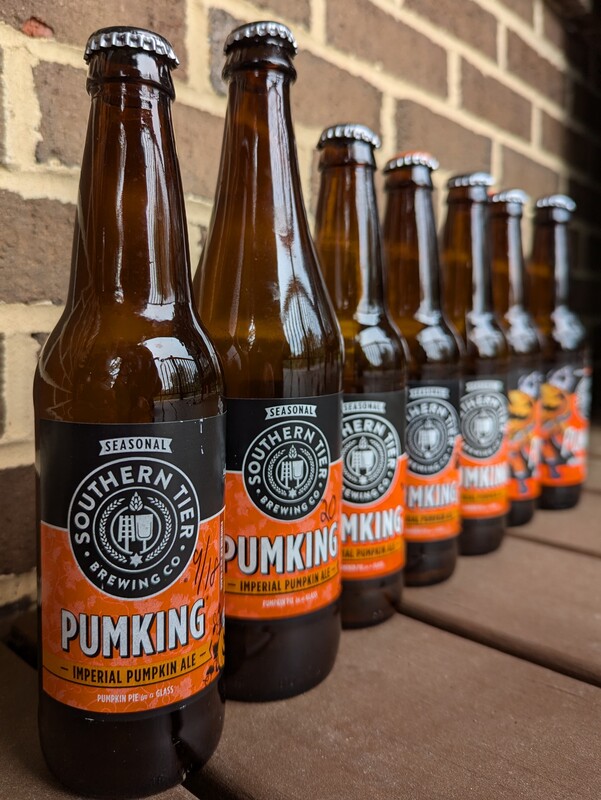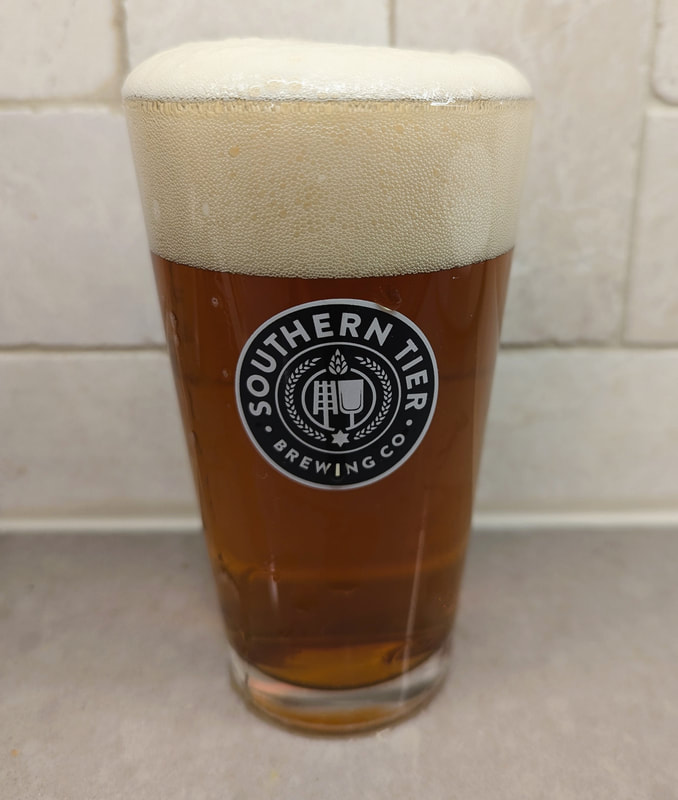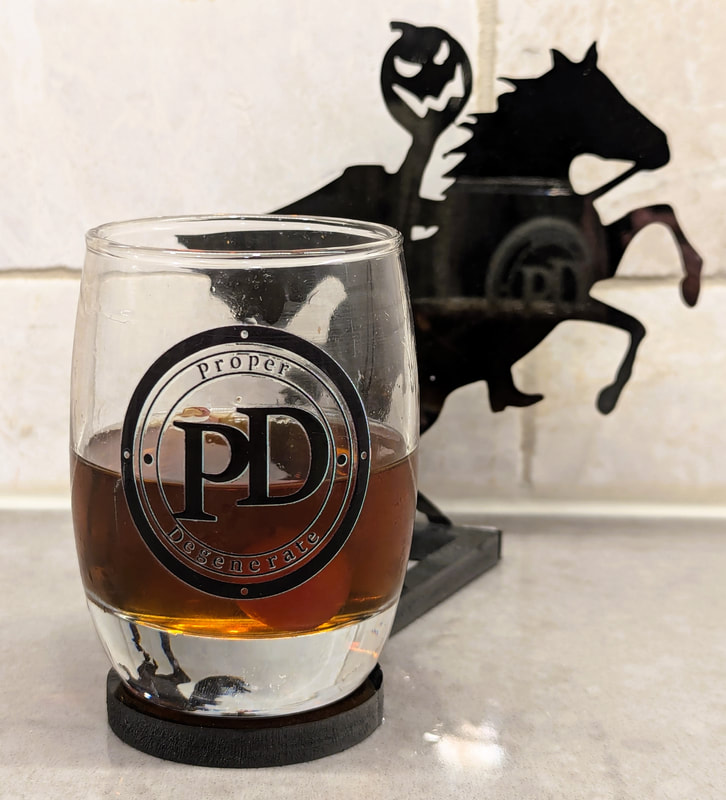|
It’s an unfortunate reality that we have day jobs and cannot yet be full-time degenerates. Though neither of us is currently employed in academia (thank the gods and demons), we both spend a good bit of time publishing articles in stodgy scientific journals. The workday striving for precision sometimes unexpectedly bleeds into weekend fun. As one example, we found an interesting way to pass the time both before and during Covid by taking a page from clinical drug trial research. No, we were not developing vaccines in the bathtub, but we started applying “double-blind” research methodology to our taste tests. Why wouldn’t we just enjoy our favorite treats, you might ask, and make the weekends more relaxing? Well, we enjoy certainty, and we wanted to see if we REALLY liked the things that we liked, or just thought that we liked them because of habit or good advertising. Of course we started with alcohol. The first of these taste tests was of bottom-shelf American lagers (i.e., there’s no need to spend a lot of money to have fun), and the procedure was pretty straightforward. One of us went into the kitchen and poured each beer from its aluminum can or bottle into an individual serving container that you couldn’t see through, writing down which beer went where (e.g., Miller High Life into blue coffee mug). Then, the other came in, poured each container into two identical opaque glasses, and wrote down which container corresponded to which glass (e.g., blue coffee mug into Erzsebet Bathory coffee cups). After this process was completed, the tasting began, and each beer was rated on various scales (e.g., hops, malts, carbonation). After the ratings were all sorted and finalized, the winner was selected, and the true identities of all beers are revealed to the shock and delight of the participants. It’s a fun party activity, but you really only need two people to do this. The results of this cheap lager test were surprising: we discovered that we ranked our formerly favorite cheap beer only #4 of 10, and one we thought was hated ended up at the top spot. We also found out that we were unanimous in still hating Busch beer the most. You can’t argue with science…  Our favorite memento from Southern Tier's Pittsburgh brewery. Our favorite memento from Southern Tier's Pittsburgh brewery. One of the things we don't hate is the fact that pumpkin beers start showing up all over the East coast of the US in the Autumn. They don’t seem to be a big thing in the UK or Europe yet, and this remains a unique American perk. Therefore, it will probably surprise no one that we’ve been annually taste-testing pumpkin beers for a few years. The results have been alarmingly consistent: Southern Tier’s famous Pumking Imperial Ale has been the winner EVERY SINGLE TIME and for EVERY SINGLE YEAR. Believe it when I tell you that we’ve done our best to knock him off his orange perch. Last year, we selected over a dozen different pumpkin competitors to take on the King. He beat them like they were like anonymous nunchuck-wielding goons in the Blade movies. We had the pleasure of visiting Southern Tier’s tasting room in Pittsburgh PA several times to pay our respects. During one visit, we enjoyed their draft Pumking so much that we made a few impulse buys of limited-edition ales (e.g., Sapsquatch – an ale made with maple syrup) and a gigantic Pumking sign. Their merch is impressive. Though we love the sign, it occasionally reminds us to drink with a wee bit more moderation. We can exert some restraint, though; we save a few bottles every year to age. We hit upon this early on, finding that a forgotten bottle was incredible a year after it was produced. We now crack open a 2- or 3-year old Pumking each Thanksgiving and Christmas to help the holidays go more smoothly. Long story short, after years of patience, we finally collected enough well-aged Pumkings to do a “vertical tasting” of seven solid years of alcoholic pumpkin-y goodness. We had some important questions: 1) How long does it stay drinkable? 2) Is there a “sweet spot” where aged Pumking is better than fresh?, and 3) What flavors change the most over time?
How long does it stay drinkable? For our sample, there was a clear line in the sand when the Pumkings stopped tasting good. This was at the seven year mark (i.e., the 2018 bottle). In order to double check and ensure reliability, we cracked open our very last remaining 2018 later that night with the same result. A pity, as 2018 was a very good year. Is there a “sweet spot” where aged Pumking is better than fresh?, Yes! It seems to be somewhere between two and three years. At some point during that time, Pumking matures to a “liquid cocaine” stage where the malts are perfection, the hops mellow, yet the spices remain punchy and beautiful. What flavors change the most over time? There was some variability on this. In general, the malt flavors held up the best but the hops obviously lost some potency with age. The spices were the real wild card, though, with some flavors becoming MORE dominant over time, but not in a systematic way. More generally, the pie spices seemed to hang on pretty well, but became harder to differentiate over time (i.e., not tasting cinnamon, but tasting “spice”). Finally, when the time of tasting and judgment was over, we thought it might be fun to blend of all the non-skunked versions. This did not go well. For some reason, you need to keep the Kings separate. I guess they don’t like to share the stage, and you don’t want an international war in your glass. Now, we should note that we have had other high ABV beers in our life that were aged longer than seven years. Though we did a pretty good job keeping them in dark and (relatively) cool places, the temperature was not completely uniform, so we could have cocked up and/or accelerated the aging process. That being said, even under imperfect conditions, the fact that a five+ year old ale is not only drinkable, but a real treat, is pretty impressive. Kudos to the Southern Tier folks for crafting a true American masterpiece. You may even still be able to pick up a six-pack of the 2024 if you do a little searching Snippets of our tasting notes below if you’re true beer nerds: 2018
2019
2020
2021
2022
2023
2024
LINKS
0 Comments
Just a few months ago, we started our homemade, just south of the Mason-Dixon Line version of that trendy, hipster-beloved beverage called amaro. Ours was inspired by Italian Nocino (or French liqueur de noix). The original post can be found here. We make this liqueur every year. However, instead of using English walnuts (juglans regia – which strangely enough originated in Iran), though, we use eastern American black walnuts (juglans nigra). They are far easier for us to harvest, as we have three trees in the backyard. However, there is another important reason beyond laziness that we prefer the New World nuts to the Old: the flavor is VERY different.  Nocino originated in the Emilia-Romagna region of Italy. We visited this region two years ago and, as you can see, it isn't hideous. Nocino originated in the Emilia-Romagna region of Italy. We visited this region two years ago and, as you can see, it isn't hideous. English walnuts are mildly sweet, have lots of healthy fats in them, and are a wee bit bitter. They are extremely healthy snacks and can be used in savory and sweet dishes. We love them on pasta and stuffed into Mediterranean pastries. The English type is far more versatile and less polarizing than black walnuts. The black ones have even more protein than the English type, but less fat. They are also MUCH stronger in flavor. Let’s say a dish calls for a cup of English walnuts. If you even substituted ½ a cup of black walnuts, you would completely overpower it. If English walnuts are button mushrooms, black walnuts are truffles. A little goes a long way. A very popular ice cream flavor on the East coast of the US is black walnut, and it is for this reason. But back to the amaro. After two months of patient waiting, daily stirring, and the occasional taste test, our homemade nocino was ready to be decanted. This process took about 45 minutes. We first used a kitchen strainer to filter out the sad black walnut corpses as well as the vanilla bean and remaining spices. Then, we filtered the remaining liquid through everyday coffee filters. This is what took the most time. You can probably skip this step if you don’t mind a lot of walnut debris at the bottom of your bottle, but we wouldn’t recommend it. There was a LOT of debris. As we can be impatient people, we changed filters about every ¾ cup or so to speed the process along. We might have also put on a fun podcast on serial killers to help pass the tedious time. After our alcoholic nut juice was all nicely filtered, we blended about 1/3 of the mix into our “master blend” bottle. This contains some of every nocino we’ve made for the past four consecutive years. We only break this stuff out on special occasions, as it is amazingly delicious. The remaining nocino was put into repurposed (and assiduously cleaned) liqueur bottles and labelled so we don't forget the contents. It’s technically ready to drink at this point, but for the first few months after decanting we tend to mostly use it in cocktails as opposed to serving it “neat”. This is because it become much smoother and “softer” with a bit of age and with a little oxidation. After about three months, try it chilled with a splash of lemon juice and your mind will be blown by this cheap backyard tipple. Please feel free to send us thank you emails after you try it. Tasting notes:
Adjustments:
Another recipe:
-------------------------------------------------------------------------------------------- Of course, it would be a shame not to give an example of how to use it in a cocktail. We call this recipe The DC Noir, our version of a Black Manhattan
Stir with ice (about 60 revolutions), strain, and garnish with a cherry and enjoy the taste of Autumn. |
Categories
All
Archives
June 2025
|







 RSS Feed
RSS Feed